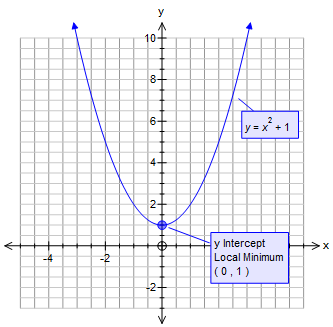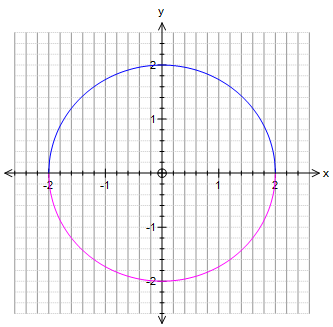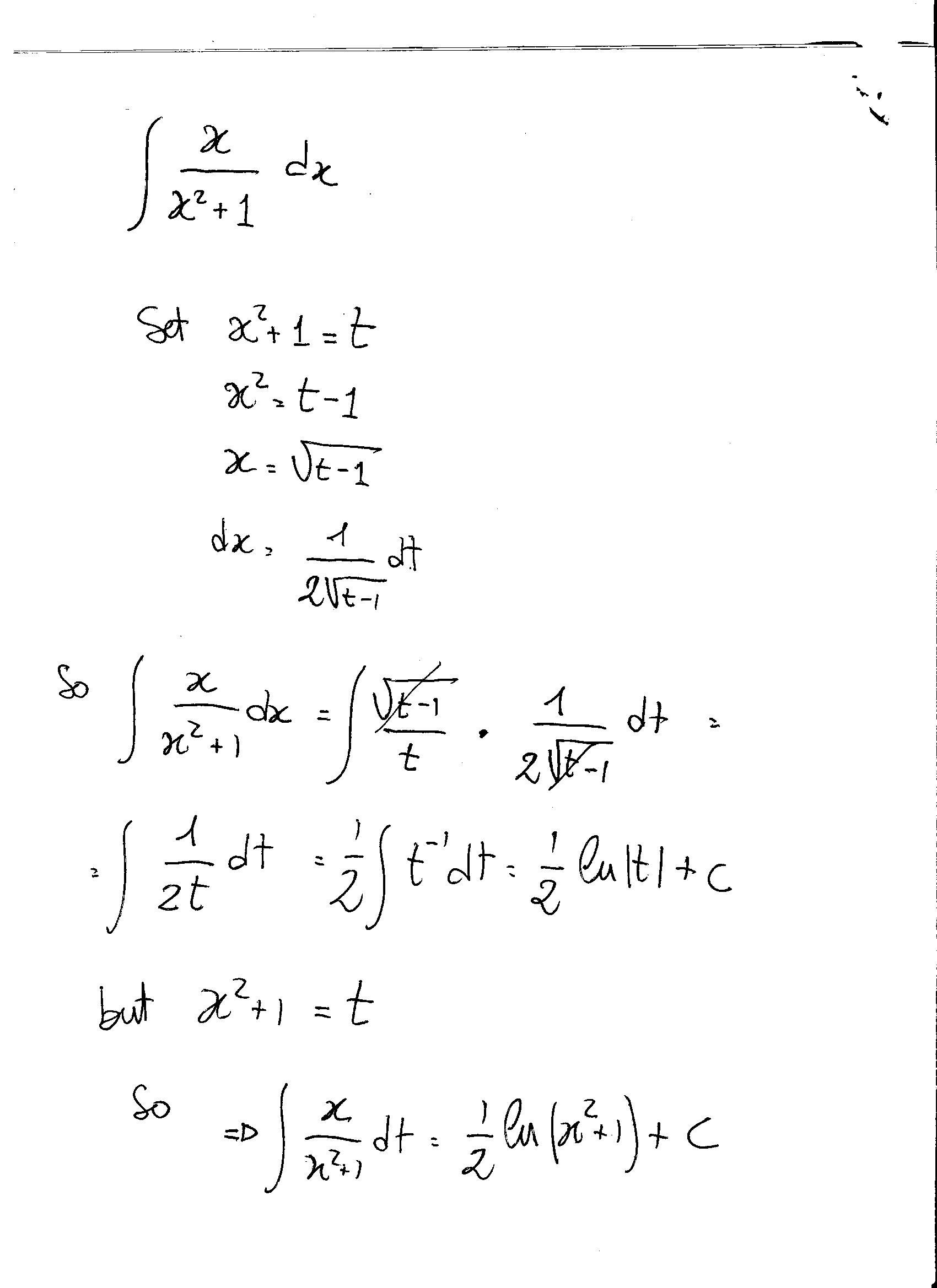Topic i squared statistic: The "i squared statistic" is a critical tool in meta-analysis for measuring the inconsistency across study results. This comprehensive guide delves into its calculation, interpretation, and application, providing essential insights for researchers and statisticians aiming to enhance the robustness of their meta-analytic studies.
Table of Content
- I-Squared Statistic in Meta-Analysis
- Introduction to I-Squared Statistic
- Understanding Heterogeneity in Meta-Analysis
- Calculating I-Squared
- Interpreting I-Squared Results
- Comparing I-Squared with Q Statistic
- Practical Applications of I-Squared
- Limitations and Considerations
- Visualizing Heterogeneity
- Common Misinterpretations of I-Squared
- Case Studies and Examples
- Further Reading and References
- YOUTUBE:
I-Squared Statistic in Meta-Analysis
The I-squared (I2) statistic is a measure used to quantify the degree of heterogeneity in a meta-analysis. It describes the percentage of variation across studies that is due to heterogeneity rather than chance.
Definition and Calculation
The I2 statistic is calculated as:
\[ I^2 = 100\% \times \frac{Q - df}{Q} \]
Where:
- Q is Cochran's Q statistic, which is the weighted sum of squared differences between individual study effects and the pooled effect across studies.
- df is the degrees of freedom, equal to the number of studies minus one.
Interpretation
- An I2 value of 0% indicates no observed heterogeneity.
- Values of 25%, 50%, and 75% are considered to represent low, moderate, and high heterogeneity, respectively.
Advantages of I-Squared
- Unlike Q, I2 does not inherently depend on the number of studies considered, making it a more intuitive measure of inconsistency.
- I2 provides a straightforward and easily interpretable metric of heterogeneity, aiding researchers in understanding the variability in study results.
Choosing Between Fixed and Random Effects Models
The choice between fixed and random effects models depends on the degree of heterogeneity:
- If I2 is low, a fixed effects model may be appropriate, assuming all studies are estimating the same underlying effect.
- If I2 is high, a random effects model may be more suitable, acknowledging variability in the effect sizes across studies.
Confidence Intervals for I-Squared
Confidence intervals for I2 can be constructed using methods such as the iterative non-central chi-squared distribution method or the test-based method.
Limitations
- While I2 provides a measure of heterogeneity, it does not indicate the direction or impact of the heterogeneity.
- High I2 values may occur with precise estimates in primary studies, leading to potential misinterpretation.
Conclusion
The I-squared statistic is a crucial tool in meta-analysis, providing insights into the variability of study results and aiding in the selection of appropriate statistical models.
For more detailed information, refer to sources on meta-analysis and heterogeneity, such as the work by Higgins et al. (2003) and other statistical literature.

READ MORE:
Introduction to I-Squared Statistic
The I-squared (I²) statistic is a measure used to quantify the degree of heterogeneity in a set of study results in meta-analyses. It describes the percentage of variation across studies that is due to heterogeneity rather than chance. The I² value ranges from 0% to 100%, where 0% indicates no observed heterogeneity and larger values show increasing heterogeneity.
Understanding the I-squared statistic involves several key concepts:
- Calculation: I² is calculated using the chi-squared (Χ²) statistic and the degrees of freedom (df). The formula is given by:
- Interpretation: An I² value of 0% indicates no heterogeneity, 25% suggests low heterogeneity, 50% indicates moderate heterogeneity, and 75% or higher represents high heterogeneity.
- Application: I² helps researchers understand the consistency of results across different studies in a meta-analysis, guiding decisions on the use of fixed-effect or random-effects models.
- Limitations: While I² is widely used, it does not indicate the size or impact of the heterogeneity, nor does it provide a direct test of its significance.
\[
I^2 = \frac{Q - df}{Q} \times 100\%
\]
In summary, the I-squared statistic is a vital tool in meta-analysis, providing insights into the variability and reliability of study results. By identifying and quantifying heterogeneity, researchers can better interpret the findings and their implications.
Understanding Heterogeneity in Meta-Analysis
Heterogeneity refers to the variation in study outcomes within a meta-analysis. Assessing heterogeneity is crucial for understanding the consistency of results across different studies. This section delves into the methods and significance of quantifying heterogeneity in meta-analysis.
The primary statistics used to evaluate heterogeneity are:
- Q Statistic: Tests whether the observed variance in effect sizes is greater than what would be expected by chance.
- I2 Statistic: Quantifies the proportion of total variation in effect estimates that is due to heterogeneity rather than chance.
- Tau-Squared (τ2): Measures the between-study variance in a random-effects meta-analysis.
- Prediction Interval: Provides a range in which the true effect size for a new study is expected to fall, considering heterogeneity.
Here's a detailed breakdown of each statistic:
| Q Statistic | The Q statistic is a chi-squared test that evaluates if the variability in effect sizes is more than expected by chance. A significant Q test indicates heterogeneity. |
| I2 Statistic | The I2 statistic describes the percentage of variability in effect estimates that is due to heterogeneity. Values range from 0% (no heterogeneity) to 100% (high heterogeneity). Rough interpretation guidelines are:
|
| Tau-Squared (τ2) | Tau-squared measures the between-study variance in a random-effects meta-analysis. It is a measure of the absolute amount of heterogeneity. |
| Prediction Interval | Unlike other measures, the prediction interval provides a range for the effect size in a new study, considering the heterogeneity. It offers a more intuitive understanding of the variability in effect sizes. |
Interpreting these statistics correctly is essential for meta-analysts to understand and report the extent of heterogeneity, its impact on the meta-analysis, and to make informed decisions about the pooled estimates.
Calculating I-Squared
The I-squared (I²) statistic is used to measure the heterogeneity, or the variability in effect estimates, across different studies in a meta-analysis. It is an essential tool for determining whether the observed variations are due to heterogeneity rather than chance.
Here is a step-by-step guide to calculating I-squared:
- Calculate Cochran's Q:
- Compute the weighted sum of squared differences between individual study effects and the pooled effect.
- Q is distributed as a chi-squared statistic with k-1 degrees of freedom, where k is the number of studies.
- Determine the degrees of freedom (df):
- The degrees of freedom (df) is equal to the number of studies minus one (k-1).
- Calculate I-squared using the formula:
\[
I^2 = 100\% \times \frac{Q - df}{Q}
\] - Interpret the I-squared value:
- 0% to 40%: might not be important
- 30% to 60%: may represent moderate heterogeneity
- 50% to 90%: may represent substantial heterogeneity
- 75% to 100%: considerable heterogeneity
I-squared does not inherently depend on the number of studies included and provides an intuitive measure of inconsistency among study results. Confidence intervals for I-squared can be calculated using methods such as the non-central chi-squared distribution or the test-based method.
By following these steps, researchers can effectively quantify and interpret the degree of heterogeneity in their meta-analysis, allowing for more accurate and reliable conclusions.
Interpreting I-Squared Results
Interpreting the I-squared statistic is crucial for understanding the degree of heterogeneity in a meta-analysis. This statistic indicates the percentage of variability in effect estimates that is due to heterogeneity rather than chance. Here’s a detailed guide to interpreting I-squared results:
- 0% to 40%: Might not be important; heterogeneity is low and may not significantly impact the meta-analysis results.
- 30% to 60%: May represent moderate heterogeneity; some caution should be exercised in interpreting results.
- 50% to 90%: May represent substantial heterogeneity; results should be interpreted with caution, and further investigation into sources of heterogeneity is warranted.
- 75% to 100%: Indicates considerable heterogeneity; results should be interpreted very cautiously, and a detailed exploration of heterogeneity sources is essential.
The importance of the I-squared value also depends on the magnitude and direction of effects, as well as the strength of evidence for heterogeneity, such as the p-value from the chi-squared test or a confidence interval for I-squared.
| Range | Interpretation |
|---|---|
| 0% to 40% | Low heterogeneity |
| 30% to 60% | Moderate heterogeneity |
| 50% to 90% | Substantial heterogeneity |
| 75% to 100% | Considerable heterogeneity |
To accurately interpret the I-squared statistic, consider the context of the studies and the specific details of the meta-analysis. Understanding the sources of heterogeneity can help in making more informed conclusions about the overall findings.

Comparing I-Squared with Q Statistic
The I-squared (I²) and Q statistics are commonly used to assess heterogeneity in meta-analyses. Both have their unique strengths and limitations, making them complementary tools for evaluating the variability among study results.
Q Statistic:
- Q is calculated as the weighted sum of squared differences between individual study effects and the pooled effect across studies.
- It follows a chi-square distribution with k-1 degrees of freedom, where k is the number of studies.
- Q can indicate the presence of heterogeneity but not the extent of it.
- It has low power in detecting heterogeneity when the number of studies is small and too much power when the number of studies is large.
I-Squared (I²) Statistic:
- I² represents the percentage of variation across studies that is due to heterogeneity rather than chance.
- It is calculated using the formula: \( I^2 = \frac{(Q - df)}{Q} \times 100\% \), where df is the degrees of freedom.
- I² is not affected by the number of studies included in the meta-analysis, making it a more stable measure of inconsistency.
- It provides a simple and intuitive way to express the degree of heterogeneity.
Comparison and Interpretation:
- While Q can confirm the presence of heterogeneity, I² quantifies its extent, making it easier to interpret.
- An I² value of 0% indicates no observed heterogeneity, while higher values represent increasing heterogeneity.
- I² values below 25% typically indicate low heterogeneity, 25-50% moderate, and above 75% high heterogeneity.
Both statistics are essential for a comprehensive understanding of heterogeneity in meta-analysis. The choice between using a fixed or random effects model often depends on the level of heterogeneity indicated by these measures.
Practical Applications of I-Squared
The I-Squared (I²) statistic is a crucial measure used in meta-analysis to quantify the degree of heterogeneity across study results. Its practical applications are diverse and essential for interpreting meta-analytical findings effectively.
- Assessing Study Variability: I² helps determine the percentage of variation across studies that is due to heterogeneity rather than chance. This aids in understanding how much the studies differ from each other.
- Guiding Meta-Analysis Decisions: By evaluating heterogeneity, researchers can decide whether a fixed-effect or random-effects model is more appropriate for the meta-analysis.
- Improving Study Design: Identifying sources of heterogeneity through I² can highlight methodological differences, leading to improved study designs in future research.
- Policy and Practice Guidelines: Policymakers and practitioners use I² to evaluate the consistency of evidence before making informed decisions or developing guidelines.
- Clinical Relevance: In clinical research, I² assists in understanding the applicability of pooled results to different patient populations and settings.
Overall, the practical applications of I² in meta-analysis enhance the reliability and interpretation of aggregated research findings, making it a valuable tool for evidence-based decision-making.
Limitations and Considerations
The I-squared (\(I^2\)) statistic is widely used in meta-analysis to quantify the degree of heterogeneity among studies. However, it is essential to be aware of its limitations and considerations to ensure accurate interpretation and application. Here are some critical points to consider:
- Assumptions of Independence:
\(I^2\) assumes that the included studies are independent of each other. If studies share participants or other design elements, this assumption is violated, leading to potentially biased results.
- Sensitivity to Study Size:
The \(I^2\) statistic can be influenced by the size of the included studies. Small studies can produce high \(I^2\) values due to random variation rather than true heterogeneity.
- Interpretation in Context:
While \(I^2\) provides a measure of heterogeneity, it does not indicate the direction or impact of the heterogeneity on the overall effect estimate. Thus, it should be interpreted in conjunction with other statistical measures and the specific context of the meta-analysis.
- Non-Parametric Nature:
The \(I^2\) statistic does not assume a normal distribution of effect sizes, which can be an advantage in some cases. However, this also means that the typical interpretations associated with parametric statistics do not apply.
- Requirement of Confidence Intervals:
Providing confidence intervals for \(I^2\) can enhance the interpretation by indicating the precision of the heterogeneity estimate. Wide confidence intervals suggest uncertainty in the \(I^2\) value.
- Dependency on the Q Statistic:
The calculation of \(I^2\) is based on the Q statistic. Therefore, any limitations or issues affecting the Q statistic will also impact \(I^2\).
- Threshold Interpretation:
Common thresholds (e.g., 25%, 50%, 75%) for low, moderate, and high heterogeneity are arbitrary and should be applied cautiously. The significance of these thresholds can vary depending on the field of study and the specific research context.
Considering these limitations, researchers should use \(I^2\) as part of a broader set of tools for assessing heterogeneity in meta-analysis. Combining \(I^2\) with visual tools (such as forest plots) and other statistical measures can provide a more comprehensive understanding of the data.
Visualizing Heterogeneity
Visualizing heterogeneity in meta-analysis is crucial for understanding the variability in study outcomes. Several graphical methods can be employed to illustrate the extent and impact of heterogeneity among included studies.
Forest Plots
Forest plots are a common and effective way to visualize heterogeneity. They display the individual study results along with the overall meta-analysis estimate. Each study is represented by a line (confidence interval) and a square (point estimate), and the overall summary estimate is often shown as a diamond.
- The position and length of each line indicate the effect size and its precision.
- Non-overlapping lines suggest high heterogeneity.
- The size of the squares may reflect the weight of each study in the meta-analysis.
- The diamond width represents the confidence interval of the overall effect estimate.
Funnel Plots
Funnel plots help to assess the presence of publication bias and heterogeneity. They plot the study effect sizes against a measure of study precision (e.g., standard error).
- A symmetrical inverted funnel shape suggests no publication bias and low heterogeneity.
- Asymmetry in the funnel plot may indicate publication bias or heterogeneity.
Galbraith (Radial) Plots
Galbraith plots, also known as radial plots, plot the standardized effect sizes against a measure of precision.
- Studies lying outside a central band indicate heterogeneity.
- These plots can help identify outlier studies contributing to heterogeneity.
Baujat Plots
Baujat plots are useful for identifying studies that contribute most to the heterogeneity in a meta-analysis.
- They plot the contribution of each study to the overall heterogeneity against its influence on the overall meta-analysis result.
- Studies located in the upper right corner contribute highly to both heterogeneity and the overall result.
LOESS Curves
Locally Weighted Scatterplot Smoothing (LOESS) curves can be added to scatter plots to highlight trends in the data and visualize heterogeneity.
- LOESS curves smooth out the data, helping to identify patterns and deviations.
Other Visualization Tools
Additional graphical tools for visualizing heterogeneity include:
- Confidence Interval Plots: Highlight the variability in effect sizes and confidence intervals across studies.
- Scatter Plots: Used in network meta-analyses to visualize the relationships between different treatments.
- Network Diagrams: Show the direct and indirect comparisons between treatments in network meta-analyses.
These visual tools aid in understanding and interpreting the extent of heterogeneity, thereby facilitating better decision-making in meta-analysis.

Common Misinterpretations of I-Squared
The I-squared (\(I^2\)) statistic is widely used to quantify heterogeneity in meta-analyses. However, its interpretation can often be misunderstood. Here are some common misinterpretations of \(I^2\) and clarifications to help understand its proper use:
-
\(I^2\) Indicates the Proportion of Total Variation Due to Heterogeneity:
It is often assumed that \(I^2\) directly measures the percentage of total variation across studies that is due to heterogeneity rather than chance. While \(I^2\) does provide an estimate, it does not quantify the absolute amount of variability.
-
\(I^2\) Values of 25%, 50%, and 75% Represent Low, Moderate, and High Heterogeneity:
These thresholds are guidelines rather than strict rules. The context and field of study should influence the interpretation of these values.
-
\(I^2\) Can Be Interpreted Independently of Other Statistics:
Relying solely on \(I^2\) can be misleading. It should be considered alongside other metrics such as the Q statistic, tau-squared (\(\tau^2\)), and the prediction interval, which together provide a fuller picture of heterogeneity.
-
Higher \(I^2\) Means Poorer Quality of Studies:
High \(I^2\) values do not necessarily imply that the included studies are of poor quality. They indicate greater variability between study results, which could arise from differences in study populations, interventions, or methodologies.
-
\(I^2\) Does Not Change with the Addition of More Studies:
The value of \(I^2\) can change when more studies are included in a meta-analysis. As more data are added, the estimate of heterogeneity may become more precise, potentially altering the \(I^2\) value.
-
\(I^2\) Can Be Used to Determine the Cause of Heterogeneity:
\(I^2\) only quantifies the extent of heterogeneity; it does not provide information about its sources. Investigating the causes of heterogeneity requires subgroup analyses or meta-regression.
Understanding these common misinterpretations helps in making more accurate assessments of heterogeneity in meta-analyses, thereby leading to better-informed conclusions and decisions based on the data.
Case Studies and Examples
Understanding the application of the I-squared statistic in real-world scenarios is crucial for appreciating its significance in meta-analysis. Below are several case studies and examples that illustrate its use in various research contexts.
Case Study 1: Medical Research
In a meta-analysis examining the efficacy of a new drug for reducing blood pressure, researchers included ten different studies. The I-squared statistic was calculated to assess the heterogeneity among the study results.
- Data Summary:
Study Effect Size Sample Size Study 1 0.75 200 Study 2 0.82 150 - Analysis: The I-squared statistic was found to be 30%, indicating moderate heterogeneity. Researchers considered both fixed and random effects models, ultimately choosing the random effects model due to the moderate level of heterogeneity.
Case Study 2: Psychological Interventions
A meta-analysis was conducted to evaluate the effectiveness of cognitive-behavioral therapy (CBT) across various psychological disorders. The analysis included fifteen studies.
- Data Summary:
Study Effect Size Sample Size Study A 0.65 120 Study B 0.70 180 - Analysis: The I-squared statistic was 50%, suggesting substantial heterogeneity. The researchers opted for a random effects model to account for the variability among study outcomes.
Case Study 3: Education Research
A meta-analysis investigated the impact of different teaching strategies on student performance. The analysis included eight studies comparing traditional and innovative teaching methods.
- Data Summary:
Study Effect Size Sample Size Study X 0.55 100 Study Y 0.60 130 - Analysis: An I-squared value of 40% indicated moderate heterogeneity. A random effects model was chosen to better reflect the differences in teaching strategies across various studies.
Case Study 4: Public Health Interventions
A meta-analysis assessed the effectiveness of different public health interventions in reducing smoking rates. The analysis included twelve studies with varying methodologies and populations.
- Data Summary:
Study Effect Size Sample Size Study Alpha 0.80 250 Study Beta 0.85 300 - Analysis: The I-squared statistic was 20%, indicating low heterogeneity. The fixed effects model was chosen as it was deemed appropriate given the low variability among study outcomes.
These case studies illustrate the practical application of the I-squared statistic in assessing heterogeneity and guiding model selection in meta-analyses across different fields of research.
Further Reading and References
For those interested in deepening their understanding of the I-squared statistic and its application in meta-analysis, the following resources are highly recommended:
- Books:
- Introduction to Meta-Analysis by Michael Borenstein, Larry V. Hedges, Julian P.T. Higgins, and Hannah R. Rothstein – This book provides a comprehensive overview of meta-analysis methods, including detailed discussions on heterogeneity and the I-squared statistic.
- Meta-Analysis in Stata: An Updated Collection from the Stata Journal – This resource is invaluable for those using Stata software for meta-analysis, offering practical examples and detailed explanations of statistical concepts including I-squared.
- Articles:
- Higgins, J.P.T., & Thompson, S.G. (2002). Quantifying heterogeneity in a meta-analysis. Statistics in Medicine, 21, 1539-1558. This paper is essential for understanding the development and interpretation of the I-squared statistic.
- Ioannidis, J.P.A., Patsopoulos, N.A., & Evangelou, E. (2007). Uncertainty in heterogeneity estimates in meta-analyses. BMJ, 335, 914-916. This article discusses the implications of heterogeneity in meta-analytic research, with a focus on the I-squared statistic.
- Online Resources:
- – The Cochrane Handbook for Systematic Reviews of Interventions provides a detailed guide to performing systematic reviews and includes extensive information on the I-squared statistic.
- – This website offers accessible explanations of statistical concepts, including the I-squared statistic, with examples and step-by-step guides.
- – Contains a section on the chi-squared test and its applications, which can help contextualize the understanding of I-squared in statistical analysis.
These resources provide a solid foundation for both beginners and advanced researchers looking to enhance their knowledge of the I-squared statistic and its role in meta-analysis.
Tiến sĩ Michael Borenstein: Thống kê I-squared
READ MORE:
Kiểm tra tính không đồng nhất trong phân tích tổng hợp












x-1=sec(squared)x.jpg)

